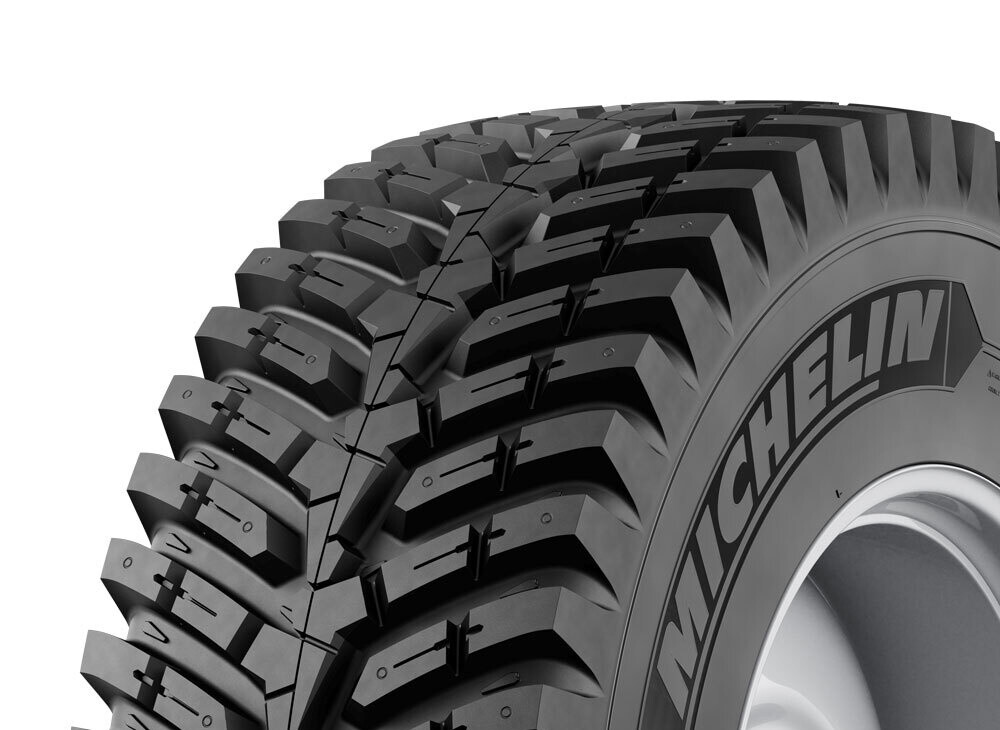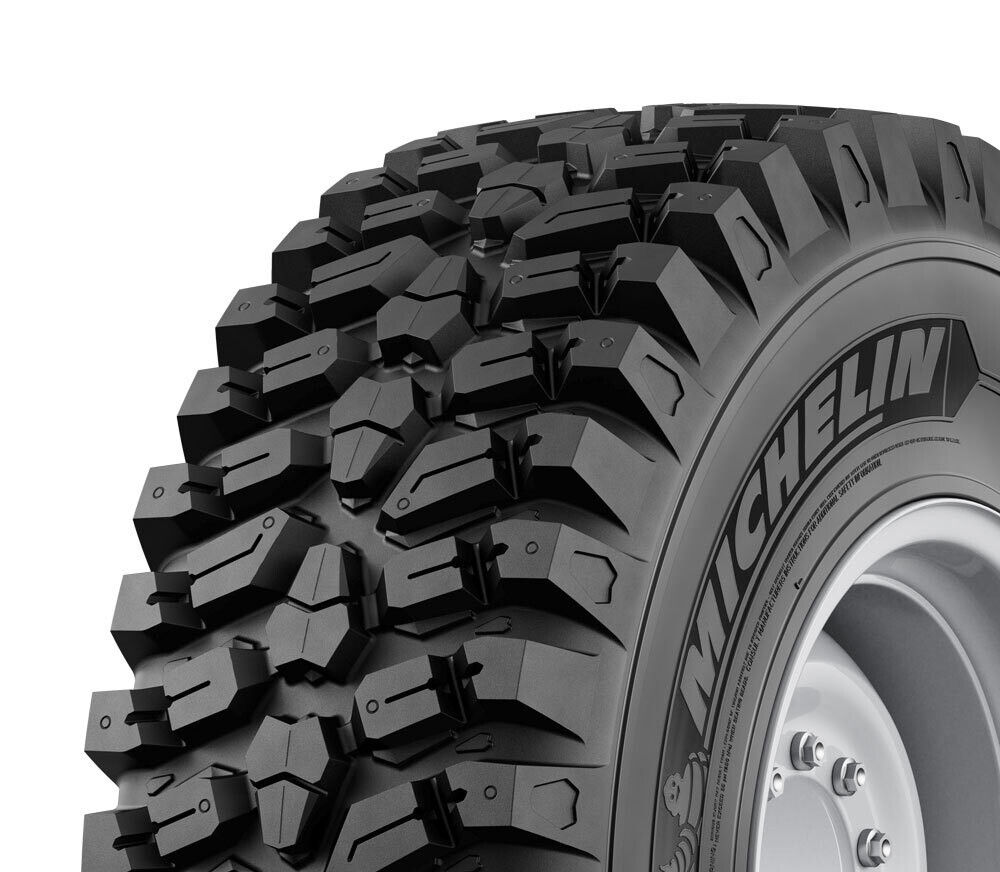
What are the different tractor tyre tread patterns?
What are the different tractor tyre tread patterns?
SUMMARY:
Radial lugs and traction
Historically, agricultural tyres were fitted with radial lug treads, i.e. perpendicular to the road, which provided good traction in the fields. But this type of tread pattern had the disadvantage of being impractical in terms of handling and steering. When a tractor fitted with these tyres was on a slope, it tended to veer off course due to a lack of stability. In short, radial lug treads were the ultimate in traction as long as the tractor had to operate in a straight line and on a flat field.
Chevron lugs for greater comfort
Radial lugs also had another drawback: the loud hammering noise they generated when driving on the road. Each lug struck the contact surface brutally, producing a sound that could be very annoying for the driver.
That's why tyre manufacturers have opted for a new approach for customers who spend more time on the road: chevron-shaped lugs with a variety of angles and shapes. This tread pattern offers a compromise between excellent traction and a more gradual entry of the lugs into the contact surface, thus reducing hammering noise. In other words, we accept to sacrifice a little traction if it means more comfort on the road and better braking.
The emergence of hybrid tractor tyre treads
It was at this point that hybrid sculptures began to emerge. When the lugs are continuous, we speak of chevrons, but when a lug is cut in two, this is the beginning of hybridisation. The first hybrid tyre treads seen in the agricultural sector were designed for road use.
It was thought that a municipal tractor, for example, which mows roadside verges and digs ditches, would mainly drive on the road to get from one site to another. The tyre does not therefore need to offer extreme traction, as these vehicles are never used in difficult conditions, such as in fields or on demanding terrain.
MICHELIN ROADBIB tyre: designed mainly for road use
These hybrid tyre tread patterns, like that of the MICHELIN ROADBIB tyre, are designed specifically for farmers who spend around 80% of their time on the road.
For example, those who tow slurry trailers to transport them to spreaders. The worksite can be a considerable distance from where the slurry is located, sometimes as much as 10 kilometres. In this case, the drivers spend most of their day in their tractor, travelling long distances to supply the spreaders in the fields. They have to make these round trips several times a day, often at high speed to avoid waiting for the spreaders.

MICHELIN ROADBIB - its tyre tread pattern was designed mainly for road use
For these users, extreme traction is not the priority, as they are not generally confronted with difficult terrain conditions, such as ploughing in hard soil. However, the comfort and manoeuvrability of the tractor are important criteria, given the number of hours spent on the road. In addition, fuel consumption is an important factor as these users seek to reduce their operating costs. The third criterion is wear. Tractor tyres wear more quickly on the road than in the field, where there are no stones or abrasion. So if the tractor is used mainly on the road, tyre wear becomes another important criterion. The hybrid tread pattern of the MICHELIN ROADBIB tyre is designed for the field and good for the road.
In other words, it allows to work in the field in normal conditions and provides a greater surface area in contact with the ground, which provides comfort on the road, braking distance and uniform wear to support longevity.
MICHELIN EVOBIB tyre: designed mainly for road and the field
The MICHELIN EVOBIB tyre offers good performance at both high and low pressure and can work in conjunction with a pressure management system (CTIS). This means that tyre pressure can be easily adjusted between road and field to ensure that the tyre performs well on both surfaces, which makes the MICHELIN EVOBIB a 2-in-1 tyre.
To achieve this, we have focused on our traction in the field, with a tread pattern similar to that of a conventional agricultural tyre in terms of the ratio between lugs and the spaces between them. This allows the soil to drain efficiently.

MICHELIN EVOBIB- its tyre tread pattern was designed for the road and the field
The tyre pressure can also be increased to reduce rolling resistance on the road and therefore fuel consumption. In addition, the tread pattern has been developed to ensure even wear while offering a certain level of comfort, although less than that of the MICHELIN ROADBIB tyre, by reducing hammering thanks to tread hybridisation.
MICHELIN EVOBIB tyre takes also advantages of MICHELIN ULTRAFLEX reinforced casing with VF and PFO standards.
MICHELIN CROSSGRIP tyre: resistance and manoeuvrability
The MICHELIN CROSSGRIP tread pattern is specially designed for roadside work, particularly for tractors used by municipalities. The main aim of the tyre is to ensure high stability, as these tractors are often equipped with mowers or shredders that are deployed on the side of the road.
As a result, the MICHELIN CrossGrip tyre is capable of withstanding a heavy load, as the inner tyre is subjected to the full load of the tools in action. In addition to its high resistance, it also has a tread pattern designed to ensure good grip. This tyre is also used for snow clearance in Canada, where it is appreciated for its manoeuvrability, precision and braking efficiency. Compared with conventional tyres, it enables drivers to operate much more precisely and quickly when clearing snow.

MICHELIN CROSSGRIP- its tyre tread pattern was designed for great resistance and manoeuvrability
What's interesting to note is that agricultural tyres are generally designed to be directional, which means that they have to be fitted in a specific direction, as indicated by the chevrons.
But when designing the MICHELIN CrossGrip tyre, we took into account the fact that it has to carry more load on one side than the other when the tool is in position, which means more wear on the side that carries more.
As a result, we have deliberately designed the MICHELIN CrossGrip tyre to be non-directional, allowing the user to easily swap tyres between the left and right side to rebalance wear, without the need to remove the tyre from the rim. As there is no direction of rotation, you simply remove the complete wheel and fit it on the other side, which saves a considerable amount of time.
Tyres for main use in the field
If you mainly use your tractor in the field, then one of our other tyre ranges will be suitable for your use.
Discover our high horsepower tractor tyres designed for long service life and great traction.
Other articles to find out more:
Need more advice? Discover our tyre basics guide




